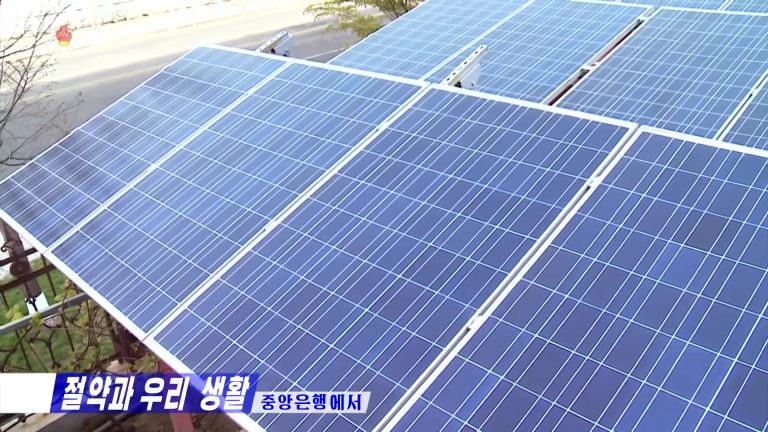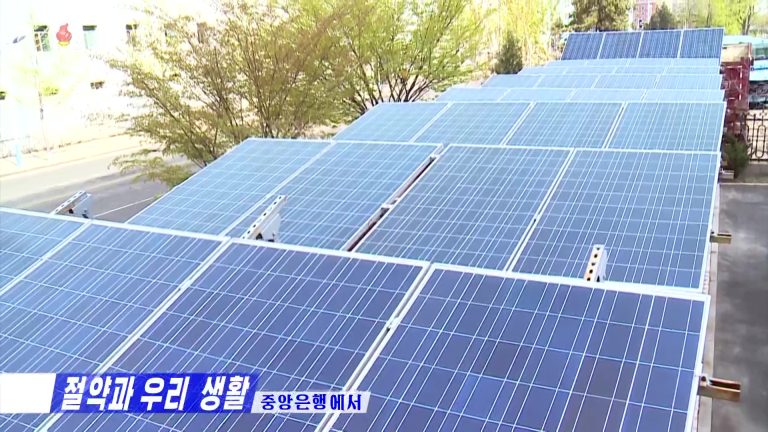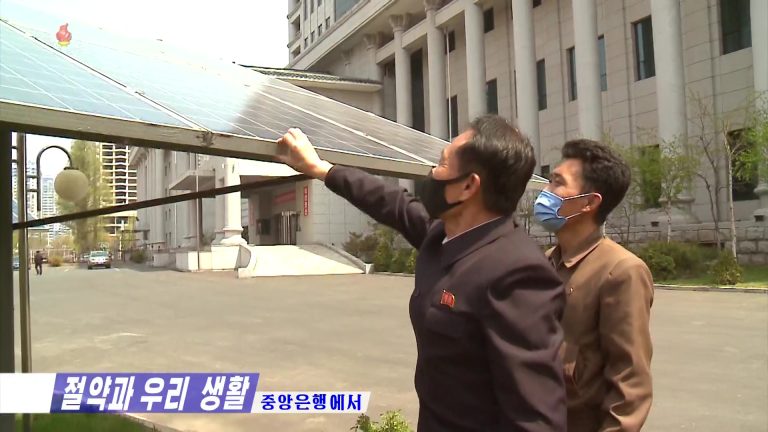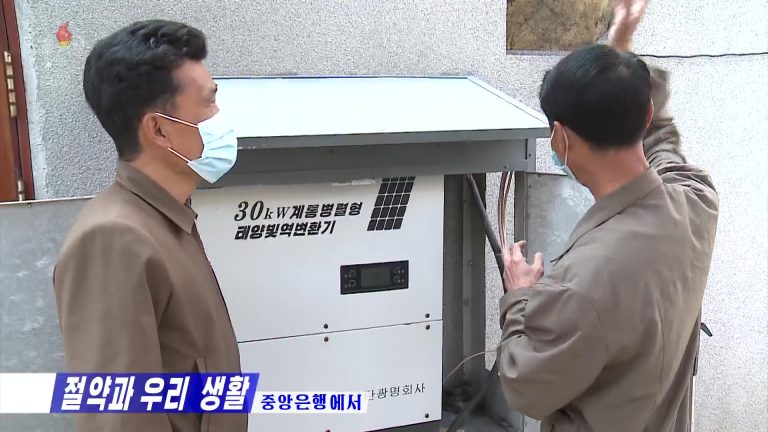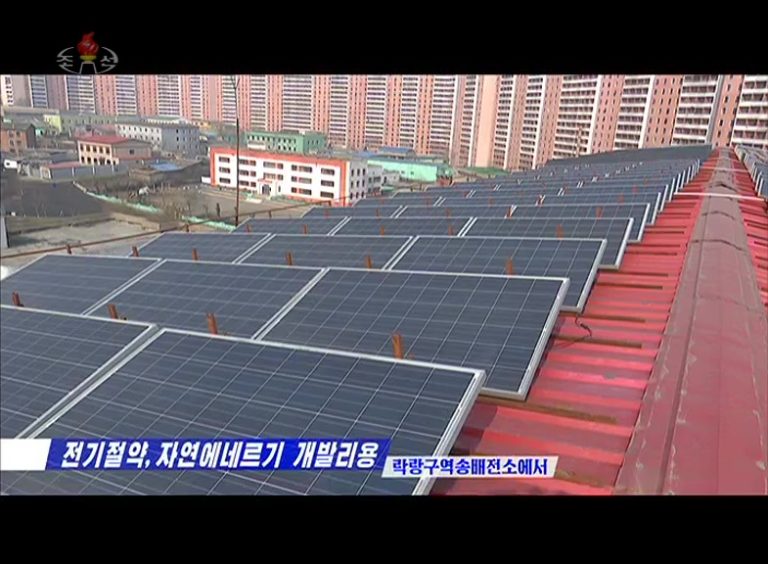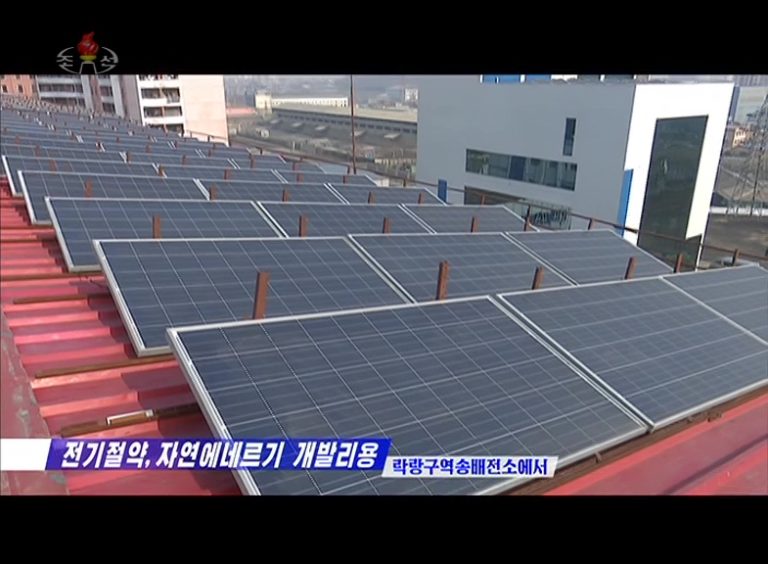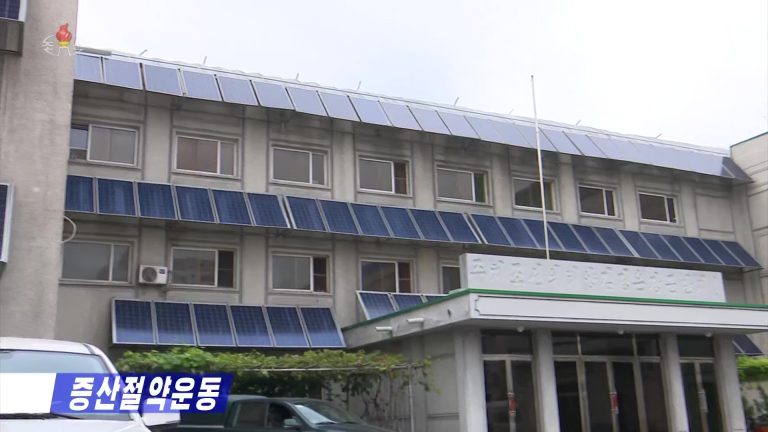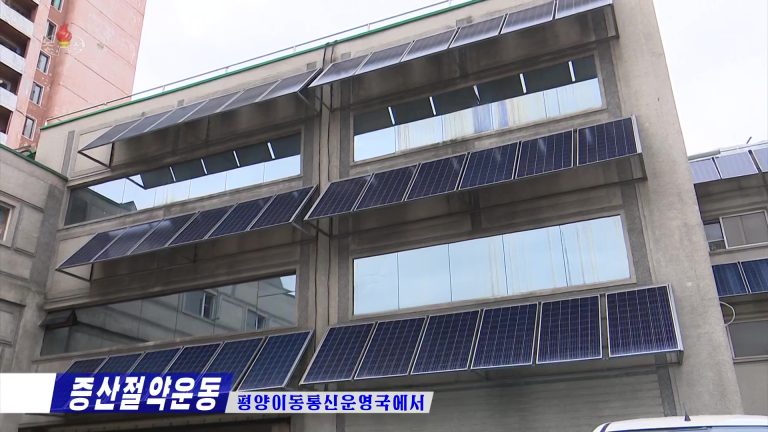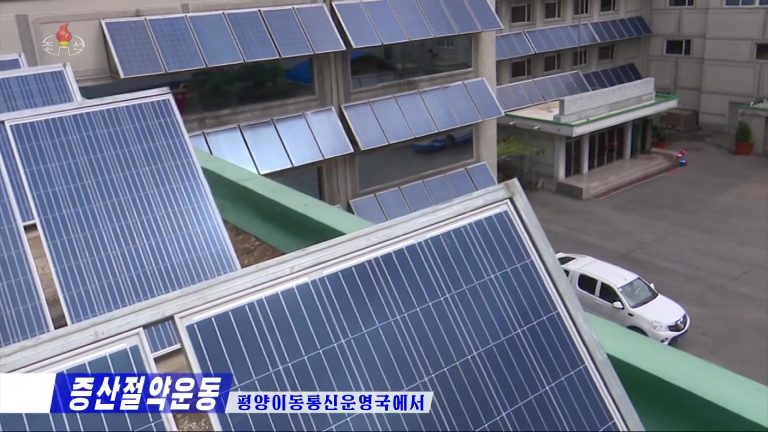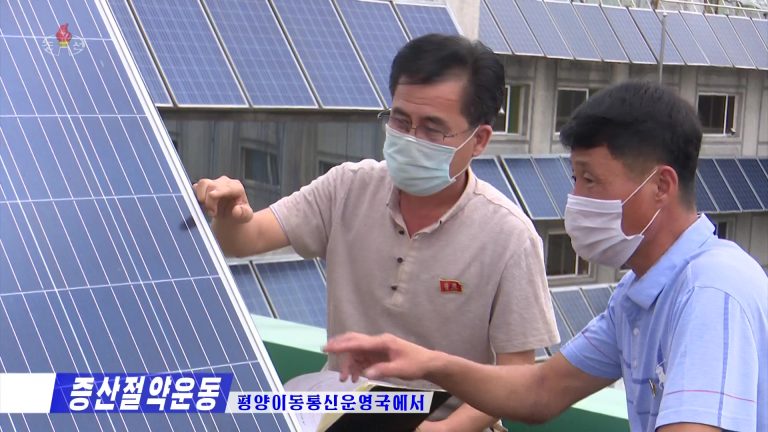North Korea’s Energy Sector: Solar in Government and Telecommunications
In this installment of our series on the North Korean power sector, we look at solar deployments in the central government.
Within the central government, solar has been most widely adopted by the financial and telecommunications sectors. Panels can be found on the roofs of the Ministry of Finance, Central Bank and Foreign Exchange Bank, while in the information technology (IT) sector, the Ministry of IT Industry and several buildings associated with the telecoms industry also have solar installations. However, that same enthusiasm is not matched at other central government buildings. Solar panels are absent from almost every other ministry or state commission building, including, perhaps surprisingly, the Ministry of Electric Industry.
While this selective use of solar in specific sectors does hint at deliberate instruction from the top, the rationale for why these sectors were selected over others is unclear. State media often talks about the development of solar power installations at various institutions but does not mention if this is the result of a party focus or simply the initiative of an official in charge.
Financial Sector
The Central Bank of the Democratic People's Republic of Korea (DPRK)
North Korea’s Central Bank (조선민주주의인민공화국 중앙은행) employs both solar and geothermal systems to reduce conventional power draw on the grid. Approximately 388 solar panels make up the installation, split between 268 panels on two buildings and a further 120 panels in the parking lot. The first panels were added in 2017 when a new building was constructed on the southern side of the site.
In a state television report broadcast on May 3, 2021, a worker is shown looking at a computer monitor graph of power output for April 20, 2021. According to the graph, the solar panels had generated 94 kWh of power by midday. The same report also mentioned the bank uses a geothermal system for heating that reduces energy consumption by 70 percent compared to an electric boiler.[1]
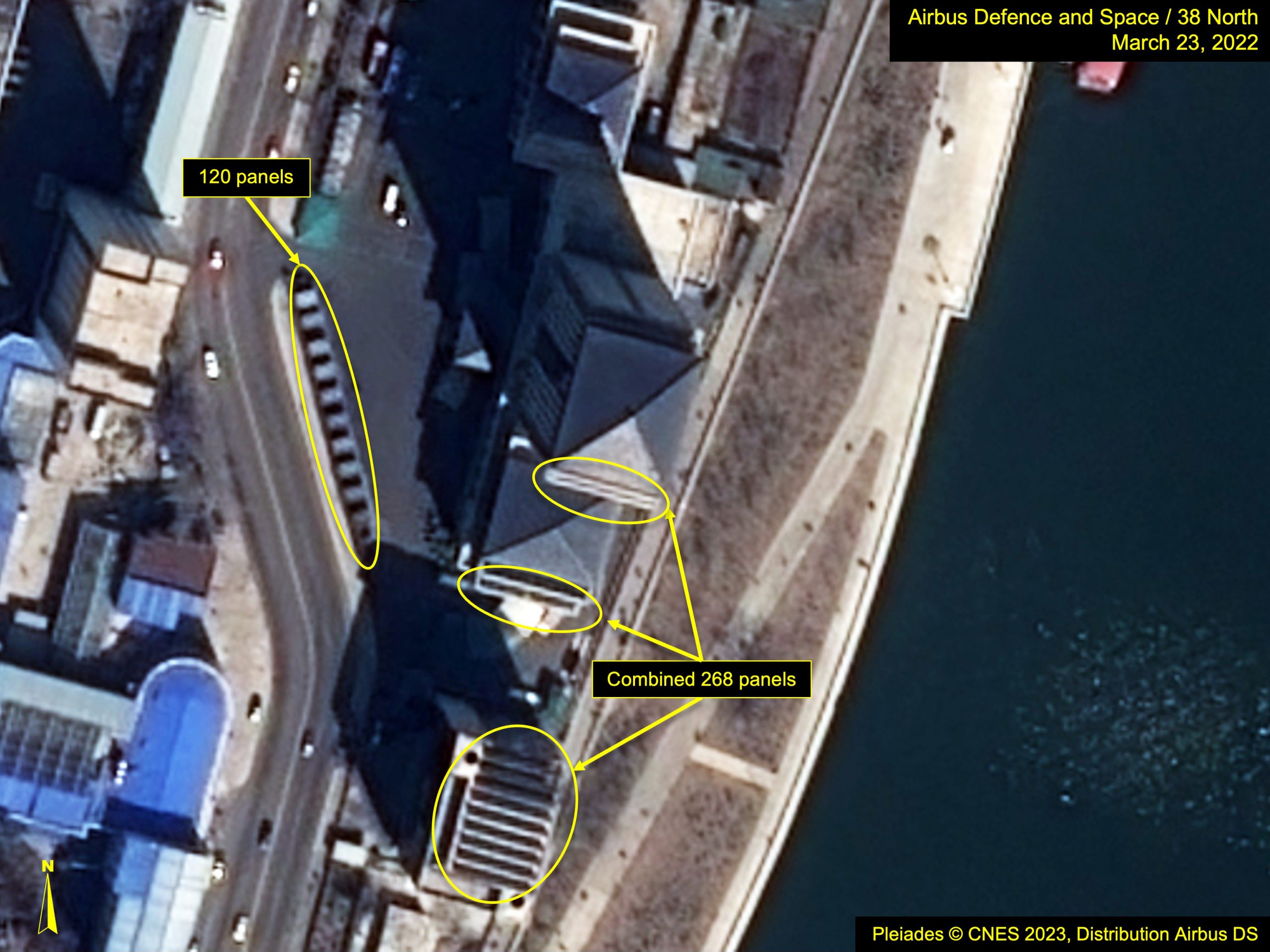
Foreign Trade Bank
North Korea’s Foreign Trade Bank (무역은행) has a 224-panel solar array on its roof. A small array first appeared on the roof in 2017 and was expanded in 2018. The entire installation was reorganized and enlarged to the current arrangement in a project beginning in July 2018.
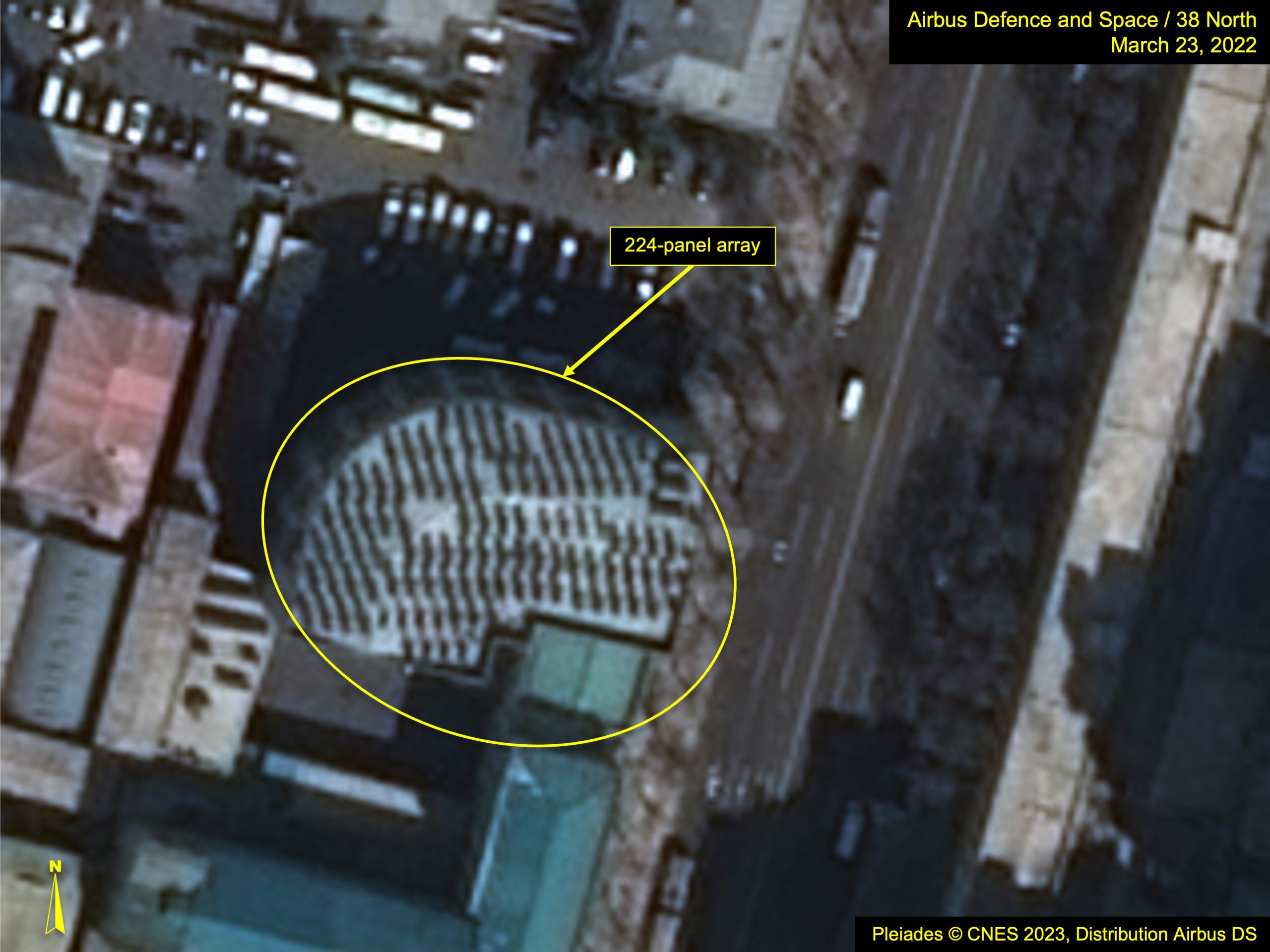
Ministry of Finance
The Ministry of Finance (재정성) has had a solar array on its roof since mid-2017—the same year that solar panels were installed on the Central Bank and Foreign Trade Bank. The array contains 76 panels making it the smallest of the three financial institution installations. Unlike the previous two institutions, the size of the array has never changed.
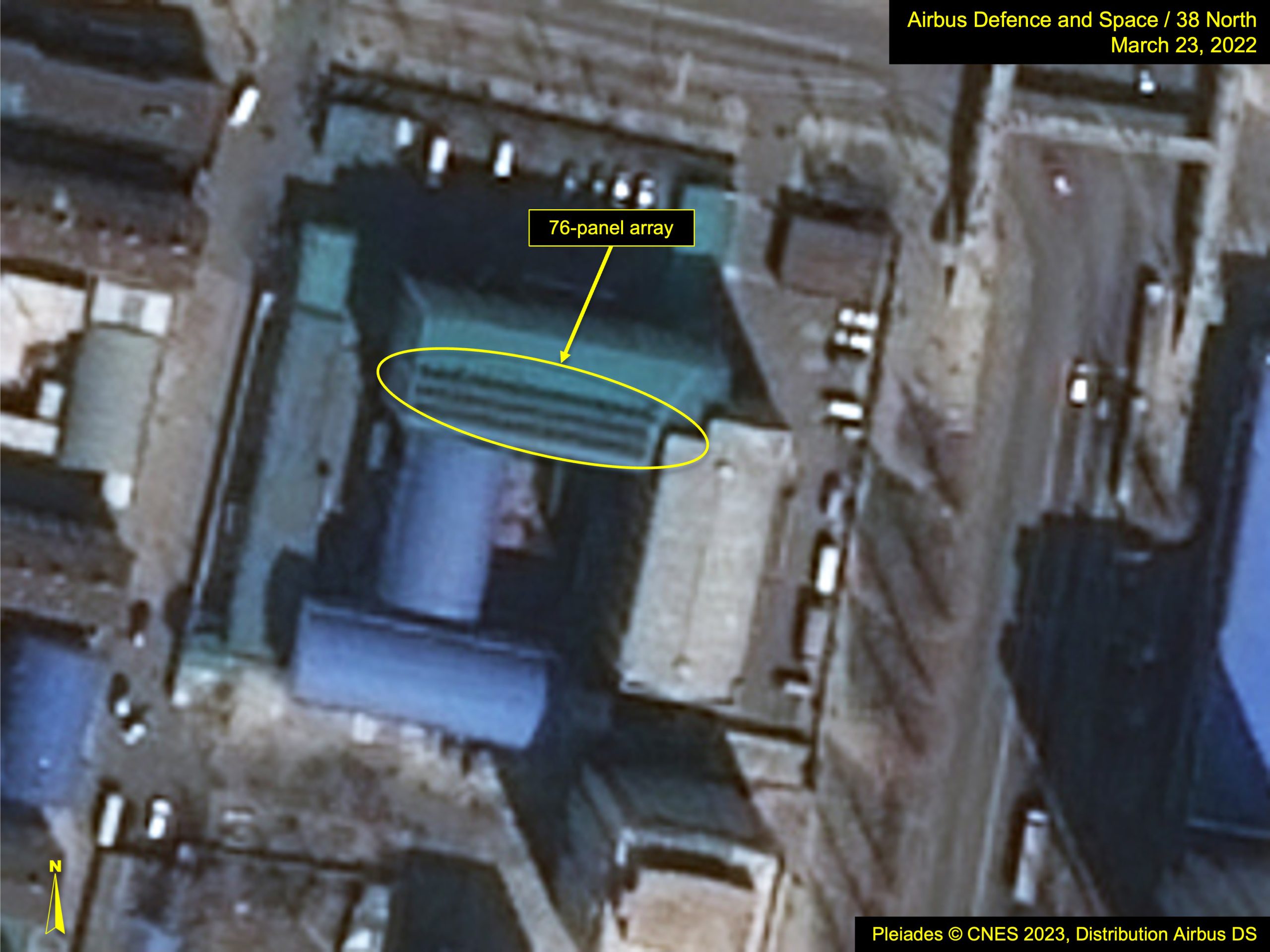
Telecommunications
Ministry of Information Industry
Solar panels were installed on the roof of the Ministry of Information Industry (정보산업성) sometime between April 2019 and May 2020 before it was renamed from the Ministry of Posts and Telecommunications. Satellite imagery is not detailed enough to determine the exact number of panels, and state media coverage has only shown the building from a street level, but there appear to be approximately 80 panels on the roof.
An adjacent building that appears to be within the ministry compound has approximately 36 solar water heaters on the roof.
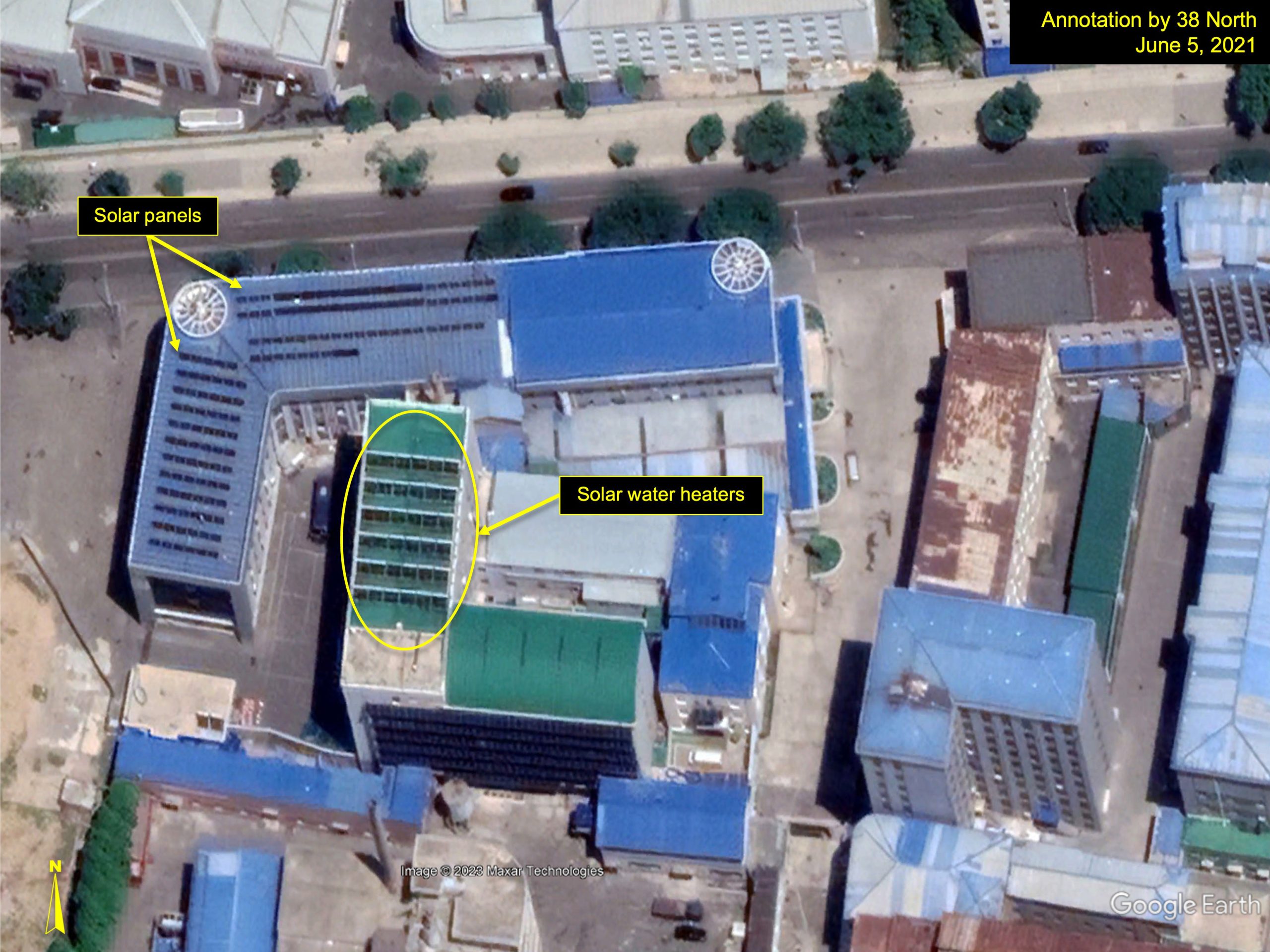
Telecommunications Research Institute
The Telecommunications Research Institute (정보산업성 정보통신연구소) in Pyongyang’s Rakrang District has a large array of solar panels on its roof. They first appeared on the building in early 2015 and were credited as being installed by the institute in a report on state television.[2]
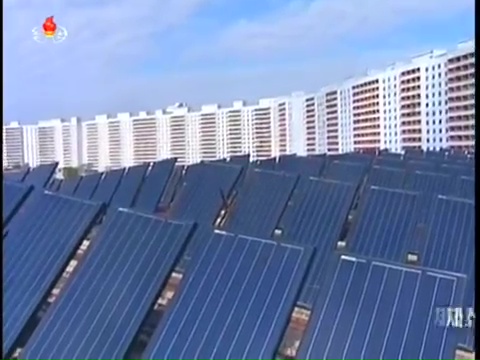
Additional panels were installed in May 2016, and then sometime between April 2018 and April 2020, the installation was reorganized and roughly doubled in size to about 300 panels. It was again featured on state television in 2020, but in that report, the panels were attributed to the Rakrang District Power Transmission Station (락랑구역송배전소), which appears to be housed in the same building.[3]
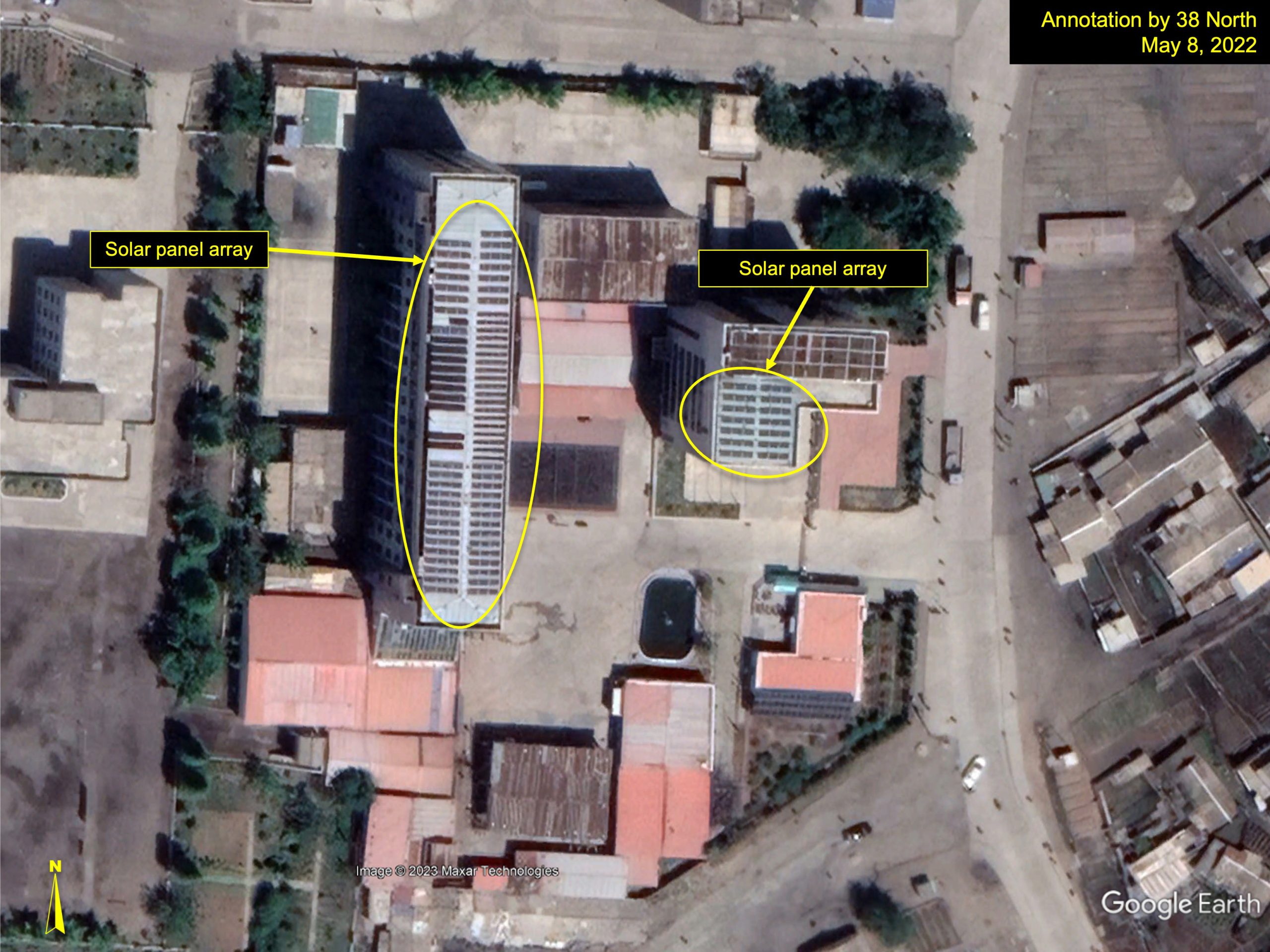
Pyongyang Mobile Communications Operations Bureau
The Pyongyang Mobile Communications Operations Bureau (평양이동통신운영국) has crammed solar panels onto just about every useable surface on the south-facing side of its building in Rakrang District. The building’s curved roof makes installation a little more of a challenge, so the panels are arranged above and below windows on each floor of the building.
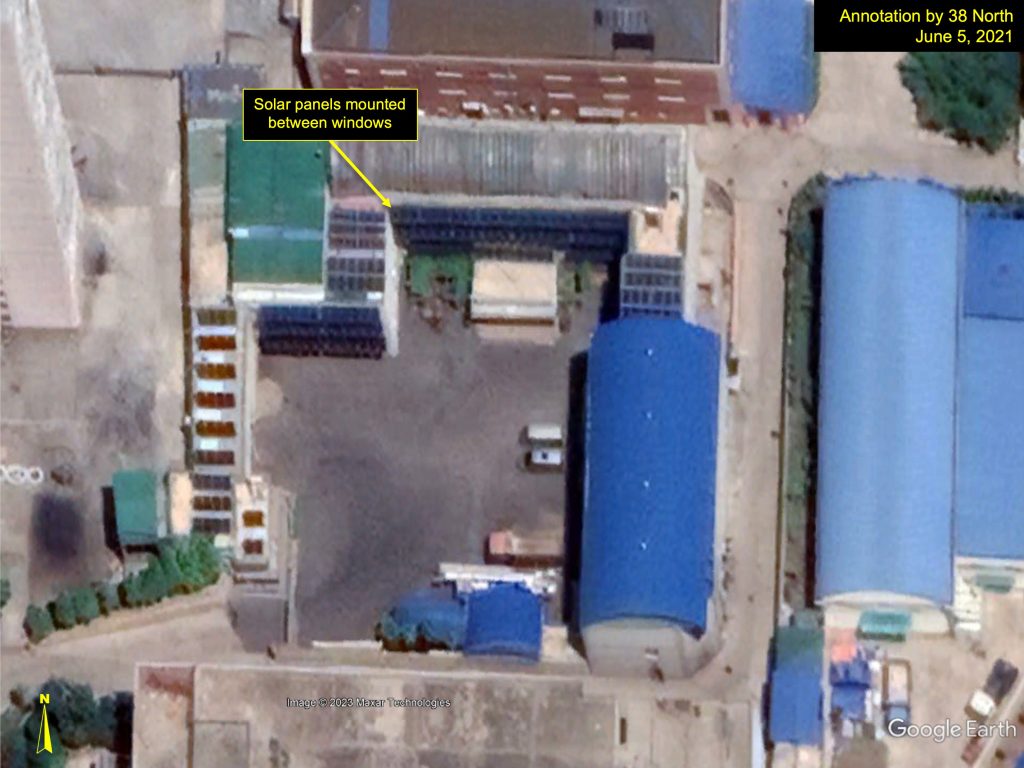
Cellular Towers
Many cellular base stations across the country are in rural areas, and many have solar panels alongside them. The panels are likely installed to provide continuous coverage during the country’s frequent power outages.
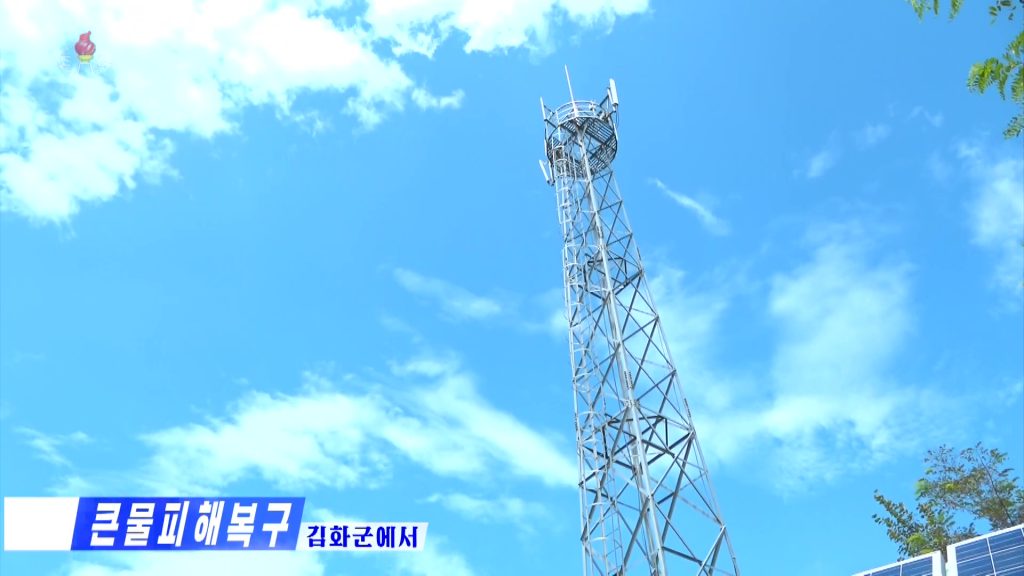
An example can be seen below of a cellular tower, solar panels and companion equipment building. This site has a neighboring building that also features solar panels. Its purpose is unclear, but it is likely related to telecommunications.
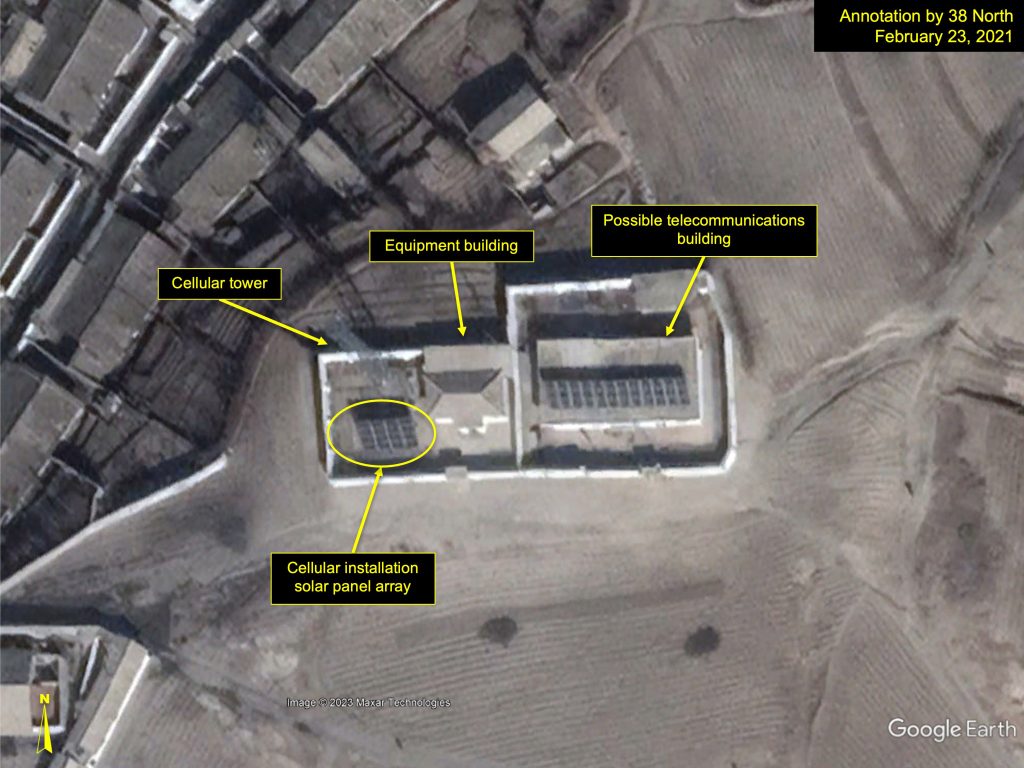
Next
In the next installment in the series, we will examine the growth of solar power in the manufacturing industry.

